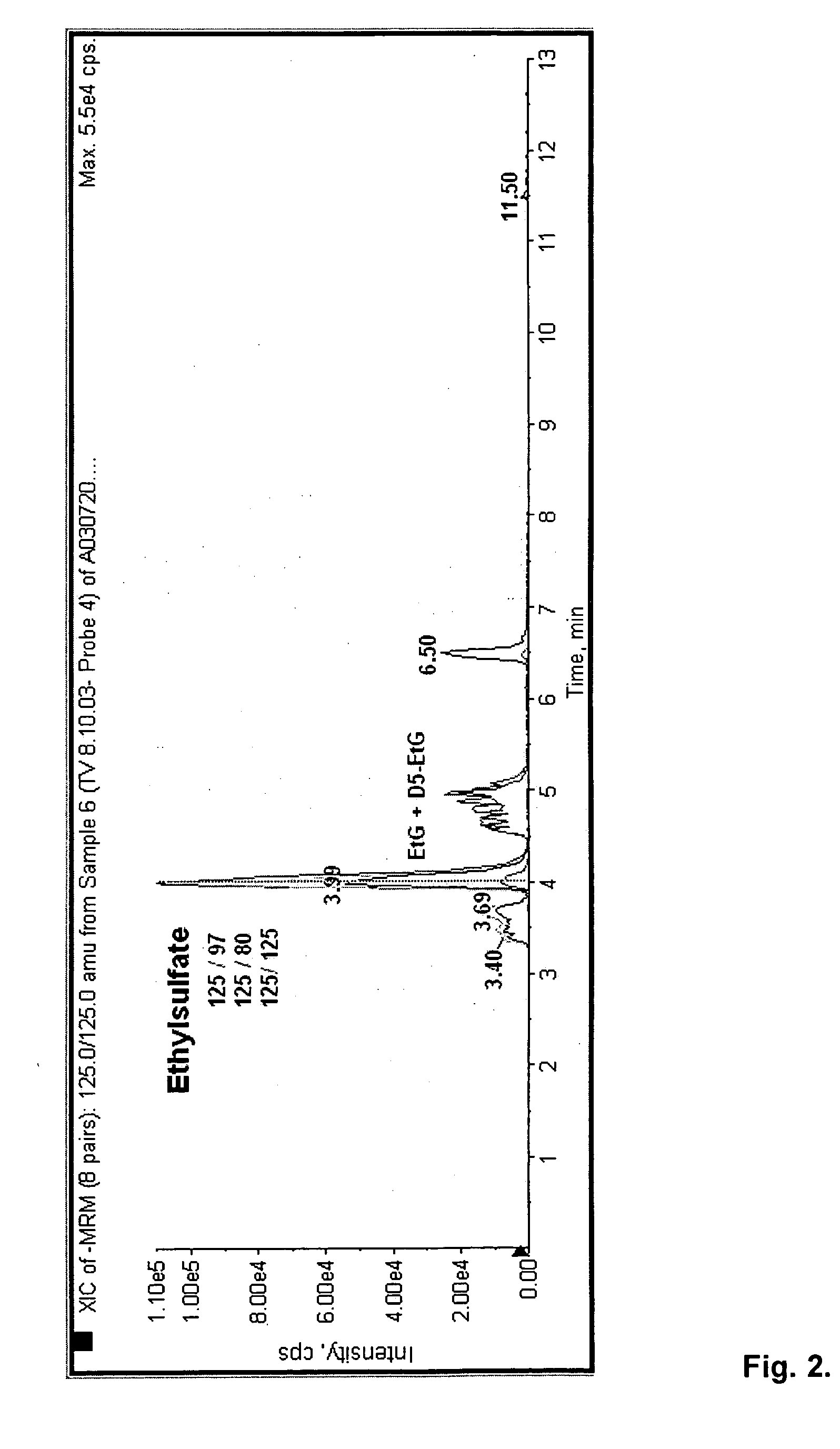Direct ethanol metabolite ethyl sulfate as an useful diagnostic and therapeutic marker of alcohol consumption
a technology of ethyl sulfate and direct ethanol, which is applied in the direction of biochemistry instruments and processes, material testing goods, instruments, etc., can solve the problems of limiting their valu
- Summary
- Abstract
- Description
- Claims
- Application Information
AI Technical Summary
Benefits of technology
Problems solved by technology
Method used
Image
Examples
Embodiment Construction
[0102] Monoethylsulfat
[0103] Ethyl sulfate (EtS) is—like EtG, FAEEs and PEth—a direct ethanol metabolite, presumably formed by sulfotransferases. The molecular weight of EtS is 126 g / mol, the formula C2H5SO4H. A solution of EtS in ethanol and sulfuric acid has the nomen officinalis “mixtura sulfurica acida seu Acidum Halleri.” EtS is commercially available as sodium salt. Enzymatic breakdown of EtS is via sulfatase. The formation of ethylsulfate by conjugation of activated sulfate and ethanol by rat liver has already been reported in 1959 by Vestermark and Boström, and the detection in rat urine after application of 35S-sulfate and ethanol to rats was performed by thin-layer chromatography and by autoradiographic detection on X-ray films (Boström and Vestermark, 1960). Lung tissue was found to also have the ability to metabolize ethanol via glucuronidation [Bernstein et al., 1983) and by sulfation (Bernstein et al., 1984, 1990). Later, Manautou and Carlson (1992) compared the hepat...
PUM
 Login to View More
Login to View More Abstract
Description
Claims
Application Information
 Login to View More
Login to View More - R&D
- Intellectual Property
- Life Sciences
- Materials
- Tech Scout
- Unparalleled Data Quality
- Higher Quality Content
- 60% Fewer Hallucinations
Browse by: Latest US Patents, China's latest patents, Technical Efficacy Thesaurus, Application Domain, Technology Topic, Popular Technical Reports.
© 2025 PatSnap. All rights reserved.Legal|Privacy policy|Modern Slavery Act Transparency Statement|Sitemap|About US| Contact US: help@patsnap.com



